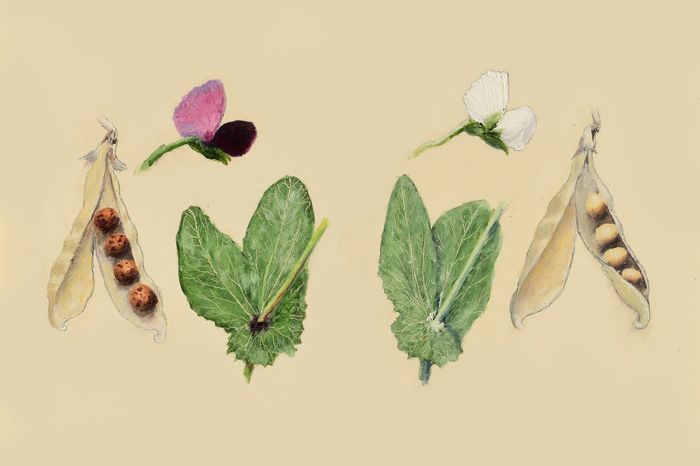Pride without prejudice in the animal kingdom
Charlie Owen explores what the animal kingdom can teach us about gender and sexuality

Soaked to the bone from the cycle ride over, I entered the Museum of Zoology with a curious mind. As a Bio NatSci, I am a regular visitor to the museum, so the pickled fish and taxidermy birds are all too familiar to me. However, today, I was preparing to view the specimens through a whole new lens: I was to embark on the Museum’s LGBTQ+ Bridging Binaries Tour.
Our tour guide, a vivacious volunteer, was clear in the message of the tour from the start - same-sex sexual behaviours in the animal kingdom are common, they are certainly not unnatural, and they are much more than a biological anomaly. But throughout the tour, I noticed something closer to home - the animal kingdom provides strong arguments against the false “biology” that is used as anti-queer and misogynistic rhetoric.
“Same-sex sexual behaviours in the animal kingdom are common, they are certainly not unnatural, and they are much more than a biological anomaly”
With just a glance at the animal kingdom, we can see the extent of these same-sex sexual behaviours and their extraordinary diversity. In Bruce Bagemihl’s groundbreaking book, Biological Exuberance, he outlined examples of over 450 species that exhibit these behaviours. From sheep to swans to dolphins, same-sex behaviours seem to have sprouted on many branches of the animal tree. In fact, not only are they common, but in some species, these behaviours can be more common than with members of the opposite sex. In giraffes, over 90% of sexual behaviours are between two males (a lot of neck). Similarly, bonobos are the epitome of sexual liberation, freely having sexual relations regardless of their partner’s sex. These examples seem to be in friction with the long-held view that same-sex behaviours are an anomaly without a purpose - if these same-sex behaviours are “the default” then it seems they must have a purpose.
Further to this, studies of macaques not only found that the majority of males are behaviourally bisexual, but also that variation in this same-sex activity was heritable. This provides evidence that these same-sex behaviours have evolved, suggesting that this behaviour provides has provided social benefits. Although it can be misleading to apply this to homosexuality in humans, this idea that some of our closest relatives may have adaptively evolved same-sex behaviours could provide proof that these behaviours are more than just an evolutionary anomaly.
“The extraordinary diversity of sex roles in the animal kingdom presents a strong challenge to the idea that patriarchal gender roles in humans have a biological foundation”
Meanwhile, the mainstream view of gender in animals hardly seems to have changed from the Darwinian one. This is generally the case in which ‘aggressive’ males fight with each other to mate with as many ‘coy’ and ‘choosy’ females as possible. However, as new perspectives and data emerge, this idea of promiscuous males and coy females is seemingly becoming extinct. One animal that challenges this view is the beloved meerkat, which has a maternal hierarchy. The dominant meerkat at the top of this hierarchy will suppress other females from reproducing, even killing the offspring of other females to ensure the care of her own offspring is prioritised. For a male to become dominant among the males and thus be able to mate with the dominant female, he must be accepted by her, otherwise, he will be deposed - dominant females have absolute power over the group. Although the culturally complex idea of gender may not apply to animals, the extraordinary diversity of sex roles in the animal kingdom presents a strong challenge to the idea that patriarchal gender roles in humans have a biological foundation. It seems that the sexual roles of animals that were based on Victorian sex values are as dead as Darwin himself.
If you ever hear the arguments that being gay is “unnatural” or that the patriarchy is part of our “biological destiny”, remember that you can reclaim biology and arm yourself with your knowledge of same-sex behaviours in giraffes or the dominance of female meerkats. As we have more queer and feminist perspectives on the natural world, new ways of looking at animals are uncovered that were previously in the shadows - inclusivity isn’t just good for us, it’s good for science. Diverse perspectives can help us understand the animal kingdom, but the animal kingdom can also help us understand ourselves and our identities within the tree of life… or is it more of a rainbow?
Want to share your thoughts on this article? Send us a letter to letters@varsity.co.uk or by using this form.
 News / Uni offers students £55k in payouts31 October 2025
News / Uni offers students £55k in payouts31 October 2025 News / Uni error forces deeper spending cuts31 October 2025
News / Uni error forces deeper spending cuts31 October 2025 News / Students launch women’s society excluding trans women31 October 2025
News / Students launch women’s society excluding trans women31 October 2025 News / Students allowed to use AI, says new uni guidance31 October 2025
News / Students allowed to use AI, says new uni guidance31 October 2025 News / College rowing captains narrowly vote to exclude trans women31 October 2025
News / College rowing captains narrowly vote to exclude trans women31 October 2025










